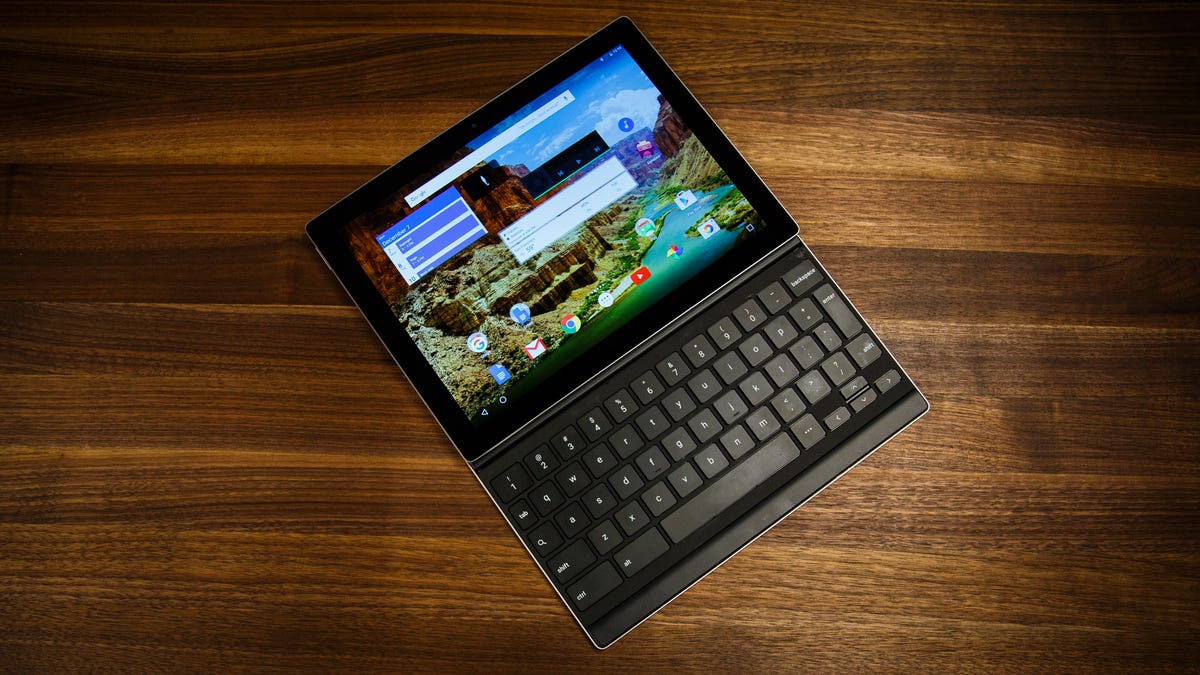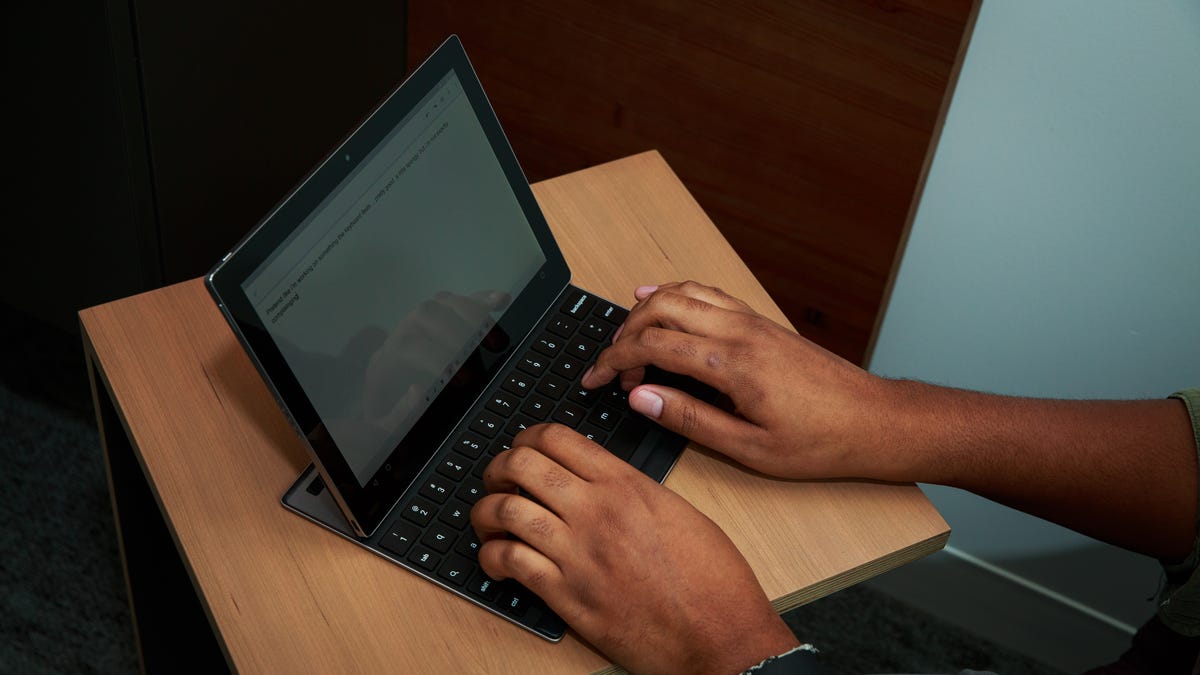Google’s Pixel C has entered a crowded, confusing marketplace. It’s the first Android tablet made and designed by Google, and it’s built to showcase everything that Android 6.0 Marshmallow has to offer. Pick up the optional full-sized keyboard, and you’ll have a compact office package.
But Android 6.0 Marshmallow is a mobile operating system: unless you’re already enmeshed in Google’s ecosystem, that’ll rule out most of the tools you’re used to using on a proper PC. Apple’s well received iPad Air 2 is in a similar spot, but the wealth of tablet-friendly apps available on iOS eases the blow a bit.
More serious competition comes from two-in-one devices such as the Surface 3, which runs Windows 10 — a full operating system. And then there’s Samsung’s 9.7-inch Galaxy Tab S2, which lacks a fancy keyboard companion, but offers a gorgeous screen and expandable storage.
Let’s see how Google’s Pixel C compares.

 Enlarge Image
Enlarge ImageJosh Miller/CNET
Google Pixel C specs comparison
| Google Pixel C | iPad Air 2 | Surface 3 | Samsung Galaxy Tab S2 (9.7-inch) | |
|---|---|---|---|---|
| Display | 10.2-inches, 2,560×1,800-pixel resolution | 9.7-inches, 2,048×1,536-pixel resolution | 10.8-inch, 1,920×1,280-pixel resolution | 9.7-inches, 2,048×1,536-pixel resolution |
| Pixel density | 308 ppi | 264 ppi | 214 ppi | 264 ppi |
| Dimensions (imperial) | 9.5 x 7.04 x 0.2 inches | 9.4 x 6.6 x 0.24 inches | 10.52 x 7.36 x 0.34 inches | 9.34 x 6.6 x 0.22 inches |
| Dimensions (metric) | 242 x 179 x 7 mm | 240 x 169.5 x 6.1 mm | 267 x 187 x 8.7 mm | 237.3 x 169 x 5.6 mm |
| Weight | 1.14 pounds (517 grams) | 0.96 pounds (437 grams) | 1.27 pounds (622 grams) | 0.58 pounds (265 grams) |
| Operating system | Android 6.0 Marshmallow | iOS 9 | Windows 10 | Android 5.1.1 Lollipop, with Samsung’s TouchWiz |
| Processors | Nvidia X1 quad-core, Maxwell GPU | 64-bit A8X, M8 motion coprocessor | 1.6GHz Intel Atom x7-Z8700 CPU, Intel | Exynos Octa 5433 (1.3GHz quad-core Cortex A53; 1.9GHz quad-core Cortex A57) |
| Storage | 32GB, 64GB | up to 128GB | up to 128GB | 32GB, 64GB |
| RAM | 3GB | 2GB | up to 4GB | 3GB |
| Battery | 12 hours 42 minutes of video playback | TBD, estimated at over 10 hours mixed use | 7 hours 41 minutes of video playback | 12 hours 42 minutes of video playback |
| Starting price (US) | $500 | $499 | $499 | $500 |
Much of the conversation here will revolve around price. The Pixel C sits at $500 for the 32GB model and $600 for the 64GB version. Tack on that keyboard (you’ll want to), and you’ll pay an extra $149. That converts to £330 or AU$690 for the 32GB tablet, £400 or AU$825 for the 64GB tablet, and £100 or AU$205 for the keyboard, though expect final prices to vary.
The Galaxy Tab S2 starts at the same price for 32GB and has a slightly lower resolution display. But you can always tack on a microSD card to meet your storage needs. The Tab S2’s performance doesn’t fail to impress either.


Josh Miller/CNET
The iPad Air 2 starts at $499 for a paltry 16GB. The first model anyone should really consider is the 64GB variant for $599, £479 or AU$829. If you care about a keyboard, there plenty of third-party options available for your iPad. If you don’t, then you’re just left to decide whether you prefer Apple iOS 9 or Android 6.0 Marshmallow — I won’t wade into that argument here.
That leaves the Surface 3. It’s the homeliest of the bunch, but it’s also the only member of the pack to offer a full PC experience, care of Windows 10. You’ll be able to run all of your favorite desktop apps, plug peripherals into a USB slot, and expand your storage with a microSD card. You’ll want to tack on an extra $130, £110 or AU$162 for the Type Cover keyboard, but the Surface 3’s versatility makes it an attractive prospect.




